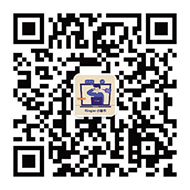Surge in the demand for SUVs worldwide is fueling the demand for wheel hubs and high-load-bearing tapered roller bearings, while luxury features are driving the adoption of precision miniature bearings in powered seats, steering, and climate systems. Additionally, electrification is reshaping the usage of ceramic and deep-groove ball bearings for e-motors, cylindrical roller bearings for e-axles, and specialized bearings for dedicated transmissions. Moreover, the need for autonomy and use of ADAS is boosting the demand for high-precision angular contact ball bearings in sensors and steering systems, while lightweighting trends accelerate the shift to polymer and hybrid bearings. At the same time, sustainability is pushing the adoption of recyclable and remanufactured bearing solutions.
The market is also witnessing significant technological advancements. The adoption of ceramics, high-performance polymers, and hybrid composites is enabling lighter, longer-lasting, and more energy-efficient designs. In parallel, the integration of sensor-enabled bearings is advancing real-time condition monitoring and predictive maintenance, reducing downtime and improving operational efficiency. Additionally, innovations in sealing and lubrication technologies are enhancing resilience against dust, moisture, and extreme environments.
Heavy commercial vehicles, including long-haul trucks, construction vehicles, and intercity buses, demand the most rugged and high-performance bearing systems in the automotive sector. These vehicles operate under extreme stress, hauling heavy loads over long distances, often across variable terrain and in challenging climates. Bearings in these applications, especially wheel hubs, axles, transmissions, and suspensions, must deliver maximum load-bearing capacity, high thermal stability, and extended fatigue life. As industrial logistics, freight transport, and infrastructure projects scale across Asia Pacific, Africa, and Latin America, the demand for durable, high-efficiency bearings in heavy commercial vehicles is becoming increasingly critical.
With global regulations tightening around emissions rules, such as Euro VI regulation in Europe, Bharat Stage VI regulation in India, and EPA Phase 3 regulation in the US, the bearing innovation aligns with next-generation drivetrain demands. Manufacturers are deploying lightweight materials, ceramic-hybrid compositions, and advanced lubrication technologies to reduce rolling resistance and improve thermal performance. As electric and hybrid commercial vehicles enter logistics and construction fleets, bearings must adapt further to support higher torque loads, quieter operation, and stricter performance thresholds, marking a new frontier for innovation in the heavy commercial vehicles segment.

 iConnectHub
iConnectHub
 Login/Register
Login/Register Supplier Login
Supplier Login


























